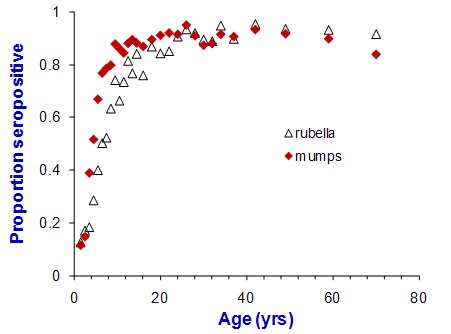Age patterns
This chapter discusses the age patterns of infections in humans. It begins by illustrating how age-stratified data on the proportion of individuals who have been infected and other data can be analysed to obtain estimates of the rate at which individuals are infected. It then illustrates how these estimates are used to obtain key model input parameters and other insights into the epidemiology of an infection.
In addition, it discusses how the basic reproduction number determines the age patterns in the proportion of individuals that are susceptible and the infection incidence. The chapter then goes on to describe how control may influence the dynamics of infections and the age distribution of individuals who are susceptible to infection, which, can have both beneficial and unexpected outcomes.

Proportion of individuals found to be positive for rubella and mumps antibodies in England and Wales during the 1980s (Farrington (1990).
Such data can be used to estimate age-specific rates at which individuals are infected and other key epidemiological parameters, such as the basic reproduction number. They can also be used to develop models, which can then be used to explore the effect of different control options.
